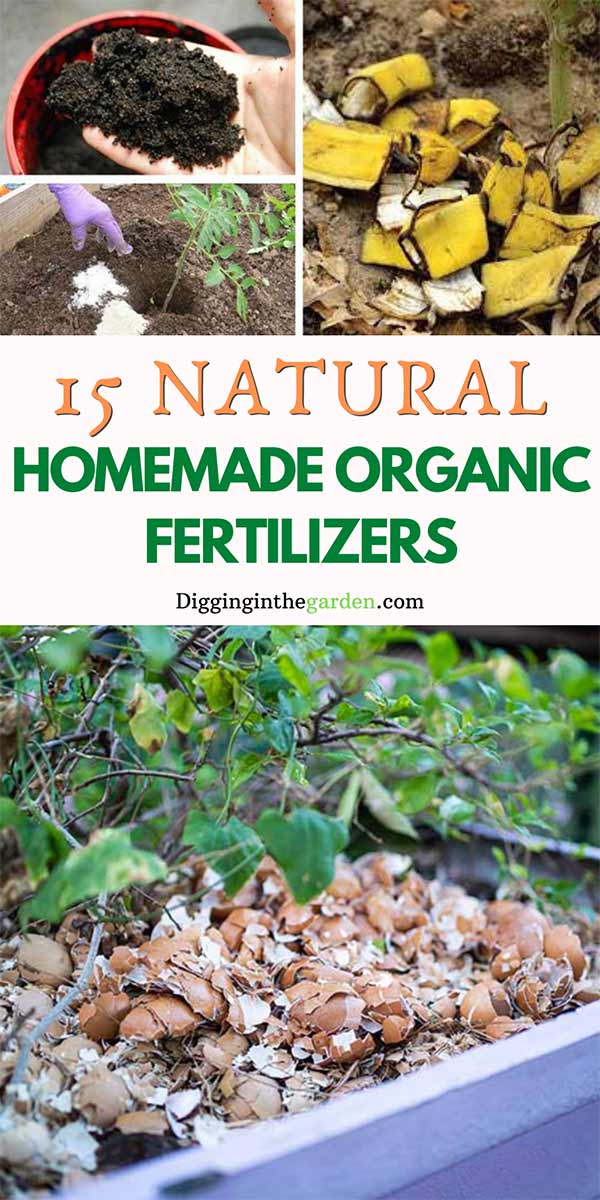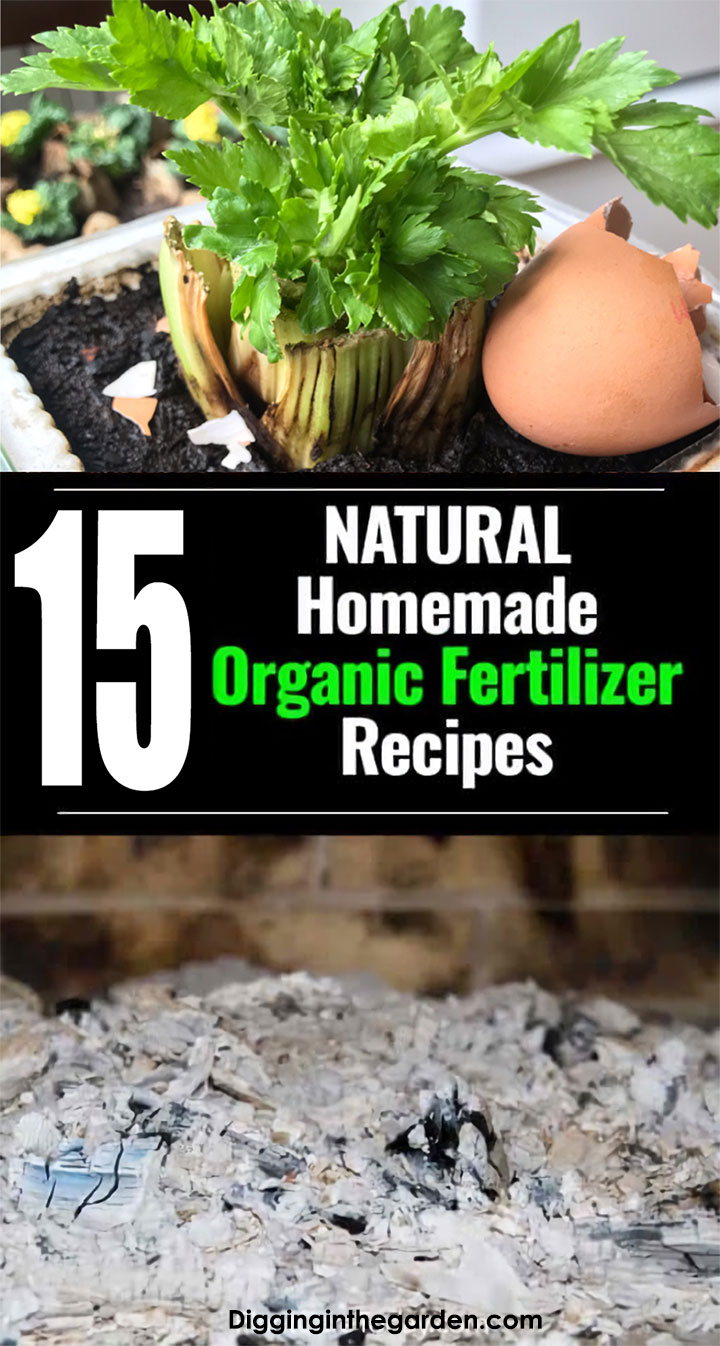Homemade Fertilizer: 15 Best Organic Recipes for All Plants
Homemade fertilizers always create an ideal growing environment for plants, but they need to be used properly to ensure optimal growth. The amount of fertilizer you apply is critically important because excessive use of strong fertilizers can have negative side effects, such as root damage. You may notice symptoms of fertilizer burn, such as brown-curled leaf edges, or overuse may cause leaves to wither and fall down.
If you prepare natural DIY fertilizers and use them efficiently, you can expect the best results. You can find many common items in and around your home that can be converted into fertilizers. Here are 15 of the most reliable, affordable, and convenient homemade fertilizers that ensure maximum plant growth without causing any damage:

1. Blackstrap Molasses
Blackstrap molasses contains many plant-friendly nutrients, including magnesium, carbon, copper, iron, potassium, sulfur, manganese, calcium, and potash. It nourishes highly beneficial bacteria to maintain the plants and soil healthy.
To make your homemade fertilizer using blackstrap molasses, you first need to dissolve a combination of alfalfa meal and Epsom salt (one cup each) in four gallons of water. Then, add one tablespoon of blackstrap molasses. Another method is to use a combination of steeped compost tea and blackstrap molasses.

2. Coffee Ground
Coffee grounds are one of the most popular homemade fertilizers available today. The plant-friendly ingredients available in used coffee grounds include nitrogen (approximately 2%), potash (below 1%), and phosphoric acid (about 0.33%).
Coffee grounds are an excellent DIY fertilizer for plants with an acidic nature, such as avocados, blueberries, camellias, evergreens, roses, azaleas, and similar types of fruit trees. The best way is to spread dry coffee grounds around your plants and let them absorb the nutrients.
3. Aquarium Water
Aquarium water makes a perfect fertilizer because it contains fish waste. When you clean your aquarium, you can use the water available in the tank as a fertilizer. It encourages optimal plant growth. When it comes to using aquarium water, do not use water from a saltwater tank.
4. Eggshells
Eggshells contain 0.50% phosphoric acid, 1% nitrogen, and many other beneficial nutrients that support plant growth. Calcium is also another prominent ingredient in eggshells that promotes plant cell growth. All these aspects make eggshells one of the most natural fertilizers for plants.
How to use eggshells? After crushing them, you need to powder them using an old coffee grinder. Then, sprinkle the resulting powder around the soil in the garden.
5. Banana
With high amounts of potassium, bananas encourage plant growth, especially roses. When it comes to planting roses, you must bury a banana in the hole alongside the rose plant. During the growing phase, bananas or banana peels can be buried into the top layer of the soil.
6. Powdered Milk
Powdered milk is a very good natural fertilizer for plants. It is a rich source of calcium. You need to mix the powdered milk with the soil before planting.
7. Cooking Water
Cooking water contains many valuable nutrients. As you boil and cook food items like pasta, eggs, vegetables, and potatoes, these nutrients are released into the water. You can apply the cooking water (after cooling) to the soil to help plants absorb the nutrients.
8. Corn Gluten Meal
Corn gluten is extensively used as an organic preemergent herbicide. It can also be used as a fertilizer. With 10% nitrogen, it promotes plant growth efficiently. After spreading a thin layer of corn gluten meal, you must mix it with the top layer of the soil. The vegetables can be planted inside mixed areas to help them absorb nitrogen.
9. Gelatin
Gelatin is an excellent source of nitrogen. One package of gelatin should be dissolved in one cup of hot water. Then, you have to add three cups of cold water to make a mixture. It can be poured on the soil directly around the plants. This natural fertilizer can be used once a month.
10. Epsom Salt
Epsom salt contains useful plant proteins like magnesium and sulfur. A mixture of one tablespoon Epsom and 1-gallon water can be sprayed directly on the foliage of the plants once every 30 days.
11. Green Tea
Many people use a weak solution of green tea as a natural fertilizer to promote plant growth. It is one of the most common homemade fertilizers available today. A mixture of one tea bag and two gallons of water can be used to water plants every 30 days.
12. Fire Pit or Fireplace Ash
If you are looking for one of the easiest DIY fertilizers, look no further than fire pit or fireplace ash. It contains calcium carbonate and potassium, which encourage plant growth. You can sprinkle the ash onto the soil. Hardwood ash is the best choice. Do not use charcoal or lighter fluid because they can damage the plants. Also, avoid using ash when growing acid-loving plants.
13. Matches
Matches are one of the best homemade fertilizers available nowadays. They provide adequate magnesium, creating a good environment for optimal plant growth. The whole match should be placed in the hole along with the plant. Another option is to soak the matches in water.
14. Hair
You can use hair as a fertilizer. As a nitrogen-rich source, it helps plants grow quickly. Hair also repels deer and prevents damage to your plants. You can go to a nearby salon to collect hair. Apart from human hair, cat hair, horse hair, and dog hair can also be used to make good DIY fertilizers.
15. Horse Feed
Horse feed contains high amounts of molasses, which promote plant growth. It can be sprinkled on top of the soil or dissolved in water or mixed with another natural fertilizer before applying it as a soil drench.



